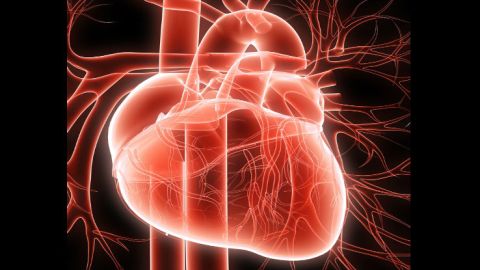How to Grow a Heart: Transforming Cells Into Human Organs

Editor’s Note: Over the next 12 days, Big Think will be running excerpts from all the lessons that make up our first online course, Great Big Ideas. During this period, we are offering discounted subscriptions to Big Think readers. You can now subscribe and gift this course for $99. Please sign up and then subscribe using the coupon code THINK to get the discount.
What’s the Big Idea?
Unlocking the human genome is a little like learning the alphabet. It gives you all the essentials – but in order to actually put your knowledge to use, you need to know more. You need to understand the rules of language, how to form words from letters and sentences from words. In biology, these elusive and complex interactions take place in the cell.
“What has been lost in the discussion up until now is the idea that the real unit of biology is not DNA, but is instead a cell,” says Doug Melton, a biologist and co-director of Harvard’s Stem Cell Institute, in his Floating University lecture, What’s Up, Doc? Is Biomedical Research Really Close to Curing Anything? “Cells are alive, cells make more cells and cells are the units that allow us to harness the future of our bodies and regenerative medicine.”
There are approximately 350 different kinds of cells in the human body. Of these, Melton is most drawn to the embryonic stem cell because of its transformational power: embryonic stem cells can become liver cells, skin cells, heart cells, even brain cells. “The discovery in the last couple of decades of stem cells has provided us with a reagent – a tool that can make any tissue in the body,” says Melton.
In an experiment that he replicates with his students, Melton has been able to turn embyronic stem cells into beating heart cells by removing the conditions for self-renewal, which allows them to become specialized. “I like to sort of contrast this with things that we’re commonly amazed by in our life. Things like an iPod or a computer are not nearly as wondrous to me as how this fertilized egg made all of these body parts in just 70 days,” he says.
What’s the Significance?
The challenge is finding a way to create viable organs from these clumps of specialized cells. Biomedicine “will open the door to manipulating our bodies in a way that we can change who we are and what our lives are like” – a proposition which is, of course, equal parts exciting and unsettling.
Already, we’re faced with the complex issue of deciding where human embryonic stem cells can and should come from. The cells now in use are leftover from in vitro fertilization procedures – eggs that have not been successfully implanted. According to Melton, there are about 400,000 such eggs in freezers in the United States.
My colleagues and I use those to derive human embryonic stem cells. We derive them from fully informed consent, where the sperm and egg donor have said that rather than throw that material away. Why not use it to try to find more about human development and disease?
To subscribe to the Floating University course “Great Big Ideas,” click here.
Image courtesy of Shutterstock.





